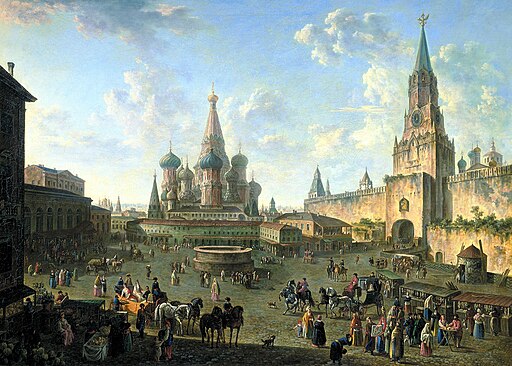
Le Pont de Argenteuil (The Argenteuil Bridge) by Claude Monet depicts a bridge with a steam train in the background, and the foreground is dominated by shades of green long grasses and trees.
This painting is a study of Monet’s impressionist style characterized by relatively small, thin, yet visible brush strokes, emphasizing a depiction of light in its changing qualities.
This painting is part of a series of pictures depicting the bridges of the Argenteuil region. From 1871 to 1878, Monet lived at Argenteuil, a village on the right bank of the Seine river near Paris, where he painted some of his best-known works.
In 1874, the year of the first Impressionist exhibition, Monet painted the Argenteuil Bridge seven times, and the railway bridge which spans the Seine, four times.
Oscar-Claude Monet was a founder of French Impressionist painting, and the term “Impressionism” is derived from the title of his painting Impression, “Soleil Levant” or “Impression, Sunrise,” which was exhibited in 1874.
Monet adopted a method of painting in which he painted the same scene many times to capture the changing of light and the passing of the seasons. Monet is known for having produced a series of paintings, all versions of the same subject and perspective.
Examples include his series of the “Valley of the Creuse” series and his famous series of “Haystacks” and “Water Lilies” paintings.
From 1883 Monet lived in Giverny, where at his home, he developed a garden landscape that included the lily ponds that would become the subjects of his best-known works.
In 1899 he began painting the water lilies, firstly with a Japanese bridge as a central feature, and later in the series of large-scale paintings, with the water lilies as the main feature. This series occupied him for the last 20 years of his life.
The Argenteuil Bridge
- Title: The Argenteuil Bridge
- French: Le Pont de Argenteuil
- Artist: Claude Monet
- Year: 1875
- Medium: 60 × 100 cm (1.9 × 3.2 ft)
- Museum: Museo Nacional de Bellas Artes (Buenos Aires)
Claude Monet
- Name: Oscar-Claude Monet
- Born: 1840 – Paris, France
- Died: 1926 (aged 86) – Giverny, France
- Nationality: French
- Movement: Impressionism
- Notable works:
- Reflections of Clouds on the Water-Lily Pond
- Farmyard in Normandy
- The Basin at Argenteuil
- A Cart on the Snowy Road at Honfleur
- Water Lilies, (National Museum of Western Art, Tokyo)
- Camille Monet on a Bench
- The Houses of Parliament (Effect of Fog) – (MET)
- “Houses of Parliament, London” (Art Institute of Chicago)
- “The Houses of Parliament, Sunset” (National Gallery of Art, DC)
- London, Houses of Parliament. The Sun Shining through the Fog
- “Seagulls, the River Thames and the Houses of Parliament” (Pushkin Museum)
- Haystacks at Scottish National Gallery
- Stacks of Wheat (End of Day, Autumn) at Art Institute of Chicago
- Stacks of Wheat (End of Summer) at Art Institute of Chicago
- “Meules, milieu du jour” (National Gallery of Australia)
- “Wheatstacks, Snow Effect, Morning” (Getty Museum)
- Garden at Sainte-Adresse
- Poppy Field in a Hollow near Giverny
- The Gare St-Lazare (The National Gallery, London)
- “La Gare Saint-Lazare” (Musée d’Orsay)
- “Arrival of the Normandy Train, Gare Saint-Lazare” by Claude Monet (Art Institute of Chicago)
- Le Pont de Argenteuil (The Argenteuil Bridge)
- Impression, Sunrise
Monet, The Argenteuil Bridge
A Tour of Museums in South America
- Mexico Museums
- Colombia Museums
- Brazil Museums
- Chile Museums
- Argentina Museums
How to recognize Monet: The Basin at Argenteuil
~~~
“Everyone discusses my art and pretends to understand as if it were necessary to understand when it is simply necessary to love.”
– Claude Monet
~~~
Photo Credit: 1) Claude Monet [Public domain], via Wikimedia Commons
Popular this Week








 Sponsor your Favorite Page
Sponsor your Favorite Page SEARCH Search for: Search Follow UsJoin – The JOM Membership Program
Sponsor a Masterpiece with YOUR NAME CHOICE for $5
Share this:
- Tweet
